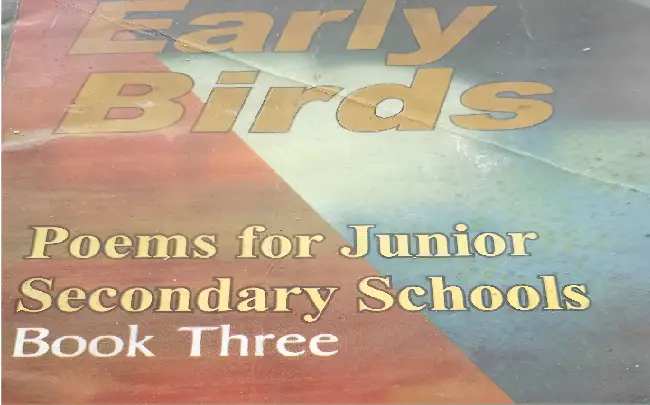Korean Sijo poetry shines with a distinct rhythm and depth. Emerging from the remarkable cultural tapestry of the Goryeo period (918-1392), Sijo has elegantly swirled through the tumultuous currents of history, shaping and being shaped by the evolving Korean culture. With its timeless themes resonating within a unique structural design, this poetic form continues to captivate literary enthusiasts across the globe.
The following article offers an enriching exploration into the colourful spectrum of Sijo poetry, illuminating its historical trajectory, structural aesthetics, thematic diversity, global significance and influence, guiding the reader towards a deeper appreciation and understanding of this beautiful art form.

Historical Overview Of Sijo Poem
The fascinating world of literary genres is vast and diverse, with each genre bearing its unique essence. One particularly fascinating form hailing from the Korean peninsula is Sijo Poetry. This genre, deeply embedded within Korean literary roots, has seen remarkable development and evolution throughout history.
Originating in the Goryeo Dynasty (918CE-1392CE), Sijo Poetry is typically composed of three lines, each averaging 14-16 syllables, inviting the poet to express profound thoughts and philosophies within this constraint. The first line often introduces the theme, the second line develops it further or adds a twist, and the final line concludes with a resolution or a profound punchline.
Throughout the Joseon Dynasty (1392CE-1910CE), there was a marked shift towards musical Sijo or ‘Gasa.’ Korean scholars and Yangban (the social elite) composed and used these poetic verses for musical performances. This vocal tradition of Sijo indeed conferred a truly socio-cultural essence, shaping an intriguing interconnectedness between music and literature.
Historically, the themes of Sijo were influenced by the contemporary socio-political and cultural climates. Early Sijo often embraced philosophical reflections influenced by Buddhism and Daoism, while during the Joseon Dynasty, Confucian themes became prominent. As such, the Sijo genre is imbued with an interplay of Korean history, philosophy, and culture.
The Sijo Poetry evolved significantly during the late nineteenth and early twentieth centuries, embracing modernism and western influence. The Korean intellectual circles began using Sijo as a satirical tool against Japanese colonisation, displaying the power of poetry as a form of resistance. Thus, the themes of political satire, nationalism, and societal strife became prevalent in modern Sijo.
In the 20th and 21st centuries, the Sijo genre has transcended its geographical boundaries, transmuting into globalised versions. This is particularly marked by the development of English Sijo in Western literature. Contemporary English Sijos retain the classic three-line structure of Korean Sijo but often present more flexible rules for syllable counts and content, thus integrating Western poetic sensibilities within the genre.
Furthermore, the stimulation provided by digital media has created new platforms and opportunities. Internet-based forums, competitions, and literary awareness programs have reshaped the public engagement with Sijo, immortalising it within the digital age. Consequently, the Sijo form continues to evolve, aligning with the transformative complexities of the modern era.
In navigation through the intricate narrative of Sijo evolution, one witnesses the symbiotic relationship between a literary form and the civilization it springs from. The rich tapestry of Sijo Poetry’s development mirrors its grounding within the ebbs and flows of Korean history, culture, and intellect. This relational aspect asserts Sijo’s essence as a dynamic, evolving genre – a reflective vessel of times past and an adaptative artform echoing the constant transformations within humanity’s narrative.
Structural Analysis Of Sijo Poems
Delving deeper into the blueprint of Sijo poetry, it becomes clear that its distinctiveness is imbued in its very structure. The layout of a Sijo poem is predominantly tripartite, manifesting across three lines in its original Korean form. However, in English translations, this morphs into a somewhat elongated six lines. Regardless of language, the structural underpinnings remain constant with each segment representing a critical stage in the poetic narrative.
The opening line serves to set the scene, illustrating a situation or a problem. Here, the poet, with the dexterity of a master sculptor, presents the foundation of the poem, offering the briefest glimpse into the nature of the forthcoming narrative.
Meanwhile, the second segment advances the narrative with an elaboration, a development, or an unexpected twist. The beauty of the second line lies in its ability to increase tensions and solidify the narrative crystallized within the opening line.
Within the confines of these trio of lines, it emerges that the third is deployed as a conclusion, offering a resolution, a retrospection, or a surprising turn of events. Demonstrably, this final line retains the potency to transform the entire narrative, often prompting the re-evaluation of the preceding lines. The last line heightens the overall artistic impact of the poem, bringing the narrative to conclusion with a profound message or the derailing of expectations.
Notably, it is not merely the distribution of poetic prose which makes Sijo structurally distinct, but also the syllabic distribution. Within every line, a subtly structured 14-16 syllable count is preserved. As such, each sentence accumulates its sense rhythmically, constructing a musical cadence within the confines of the text.
An overlooked aspect of Sijo’s structural magic lies in its use of the ‘twist’. Much more than a mere literary device to confer intrigue, the ‘twist’ is the core of the Sijo form’s narrative movement – it initiates, drives, and resolves action. Whether manifesting as an unexpected development in line two, or a reversal or commentary in line three, the ‘twist’ empowers Sijo poems with the reflexive immediacy that is characteristically theirs.
The structure of a Sijo poem may, at first glance, appear confining. Yet, within this intricate scaffolding, poets have for centuries found liberating freedom. The establishment of set boundaries nurtures creativity, forcing poets to dwell deeper into the language, exploring its nuances and exploiting its richness to manifest their feelings, thoughts, and observations within the confines of these hard set rules.
In Sijo, as in life, boundaries, far from being barriers, become the grounds from which unparalleled creative expression springs forth.
Thematic Exploration Of Sijo Poems
Delving deeper into the heart of Sijo poetry brings us to a treasure trove, exploring the key thematic elements within these profound compositions. Unsurprisingly, one finds a rich tapestry weaved with threads of philosophy, emotion, and social commentary, each contributing towards a grand literary tradition that the Korea Peninsula can proudly call its own.
The elemental cycles of nature, human relationship with the natural world, and life-death continuum are regularly addressed, revealing a deeply embedded communitarian environmentalism. This sensibility is also reflected in the stylistic devotion to “twist” punchlines, offering illuminating shifts in perspectives concerning natural phenomena.
Emotional introspection, another cardinal feature, manifests itself through poignant expressions of love, loss, despair, and jubilation. The Sijo poets skilfully harnessed the rhythmic flexibility of the form, effectively chiselling a broad spectrum of human emotions into the stone of time. Even in translation, the evocative power of the poems continues to resonate, marrying emotion with intellect in a manner recognisably Korean yet universally accessible.
In the world of Sijo poetry, words transform into a dissecting tool, scrutinising the social and political landscapes of the era. Poems courageously addressed corruption and misconduct amongst the ruling elite, and subtly advocated for egalitarian reforms. This allowed Sijo to function as catharsis, resistance, and a call for action – A tradition inherent in the warrior-like mentality of the Goryeo Dynasty from which it descended.
Importantly, the Sijo poems also serve as unique historical documents. They record the public sentiment and individual experiences during significant national events such as Japanese invasions and coups. Beyond the scope of sanctioned historical records, Sijo Poetry paints an immersive picture of life and times, giving us elegant counterpoints to official narratives. In essence, through Sijo, one can trace the emotional, intellectual, and social trajectories of the Korean Peninsula throughout centuries.
Thus, the thematic landscape of Sijo unfolds, a testament to the depth and breadth of the human condition as expressed through its unique structure and rhythmic sensibilities. Every Sijo poem, a cultural relic, takes us an inch closer to deciphering the Korean psyche and ethos. It presents numerous dimensions, amplifying the challenges and celebrations of existence, while retaining an intimate link with its historical roots.
Significance And Influence Of Sijo Poems
Comprehending the profound philosophy and indigenous shamanistic beliefs conveyed through Sijo poetry has a transformative consequence on understanding Korean culture. Shamanistic elements pervade the fabric of Sijo narratives, healing rites, and ceremonies, while spiritual connections to nature and the cosmos resonate with the nation’s collective unconscious.
The Sijo embeds a profound propensity for connecting human existence to the natural world. This symbiosis is articulated through vivid, sensory imagery e.g the undulating waves, verdant valleys, flitting birds, conferring a sense of belonging and harmony. The exacting, yet poignant representation of life-death continuum and elemental cycles reflect the sacredness accorded to every life form, instilling themes of hope, despair, or resignation, within the heart of Sijo.
Despite its structural constraints, Sijo thrives on the exploitation of the ‘twist’ or punchlines, adding philosophical depth, subtlety, and wit to the emotive fabric of the poem. Interlaced with sudden shifts and unexpected turns – the sine qua non of Sijo – elevates the poem from mere expression to a nuanced exploration of life’s complexities.
The lyricism of Sijo captures the essence of human emotions – be it love, loss, despair or jubilation. Through their emotional introspection, Sijo poets have opened windows into unique individual and societal experiences with an honesty that’s both heartfelt and intense.
Socio-Political Influence
Sijo’s profound engagement with social and political landscapes offers another facet of its influence on literature and society. Critiques of corruption and pleas for egalitarian reforms are articulated subtly yet effectively, demonstrating the poem’s potential as a vehicle for social commentary.
The socio-political efficacy of Sijo extends beyond mere critique, serving as a medium of catharsis, resistance, and advocacy. Through their verse, poets voice the collective ethos of the populace, advocating for justice and righteousness amidst oppressive conditions.
This dual role of Sijo-as history and counterpoint to official narratives, marks it as a compendium of the psyche of the Korean people. The poems hold the ability to transcend societal changes, illustrating the emotional, intellectual, and social evolution of the Korean Peninsula.
Through the careful examination of Sijo poems, we can continue to reconstruct the beliefs, ideals, and struggles of past generations, illuminating not just the path they trod but informing a richer understanding of our present and a thoughtful consideration of the future.
Interpretation And Appreciation Of Sijo Poems

In understanding Sijo poetry, one must delve beyond the subtleties of its metric structure and appreciate the philosophical underpinnings it carries. These elements often manifest in the portrayal of healing rites, ceremonies and the profound spiritual connections to nature and the cosmos made evident in the verses.
Sijo poetry also underscores a symbiotic relationship with the natural world. Humans, animals, and nature are often enmeshed in inextricable connections, underscoring a deep reverence for the earth and its inhabitants. The theme of a life-death continuum that permeates Sijo texts is a testament to this naturalistic appreciation. Poems often revolve around the cyclical nuances of the human condition — birth, life, death, and the ensuing rebirth — intertwined with elemental cycles of nature, adding layers of depth and perspective.
A distinct stylistic feature in Sijo poetry involves the use of twists and punchlines. These are not simply poetic devices aimed at eliciting reader response but are considered mechanisms of deep philosophical introspection that add complexity to the poem, rooting it in real-world concerns and observations.
Numerous Sijo poems are centred around emotional introspection, with allusions to love, loss, despair, and jubilation. The emotional amplitude of these themes displays the breadth and depth of human emotions, through a medium that uniquely captures the raw intensity of the experiences depicted. Alongside joyous celebrations and heartfelt laments, Sijo never shies away from presenting raw and sometimes even bitter emotions, sometimes in stark contrast to its otherwise serene demeanor.
Importantly, the evocative power of Sijo poetry transcends linguistic and cultural boundaries. While appreciation could potentially be lost in translation, the depth and resonance of the form often remain unscathed, carrying through the essence and emotional weight inherent in the original Korean verse.
Sijo poetry also serves as a vantage point from which to scrutinise social and political landscapes. Each poem stands firm as a critique, sometimes veiled, sometimes overt, of corruption, social ailments, and the call for egalitarian reforms. In this context, Sijo dramatically morphs from a simple lyrical form to a bold instrument of change — a medium of catharsis, resistance, and advocacy.
Furthermore, Sijo encompasses a tapestry of unique historical documents that lay bare public sentiments and individual experiences, often standing as counterpoints to official narratives. Through its verses, one can trace the emotional, intellectual, and societal trajectory of the Korean Peninsula across centuries, constructing a complex mosaic of the nation’s shared experiences.
Finally, Sijo poems can be thought of as cultural relics, providing a mirror through which to discern the distinct features of the Korean psyche and ethos. Such introspection creates a link between the static form of poetry and the dynamic form of society, reflecting the beliefs, ideals, struggles, and hopes of generations past, whilst lending itself to inspire greater understanding of contemporary Korean character and its future trajectory.
Therefore, to interpret and appreciate Sijo poetry, one must intersect the crossroads of structure, philosophy, emotion, history, and society, understanding each verse as a powerful nexus of thought, sentiment, and timeless wisdom. Every word presents an opportunity for discovery, for emerging insights into the complexities of human existence, framed within the distinctive cultural lens of Korea.
Conclusion
Indeed, the world of Sijo poetry is a fascinating realm encapsulating profound metaphysical introspections, eloquent portrayals of heartbreak, intriguingly simplistic narratives of daily life, and spiritual musings, all wrapped within its signature three-line structure. This expansive and enriching exploration into Sijo poetry unveils its unique place in the global literary discourse, its rich contributions to art, music and education, and the tools required for its meaningful comprehension.
As one delves deeper into the art of Sijo, they not only embark on a journey through the corridors of Korean history and ethos but also learn to appreciate the intricate beauty that lies within the simplicity of Sijo, a testament to the transcendent power of poetry.




